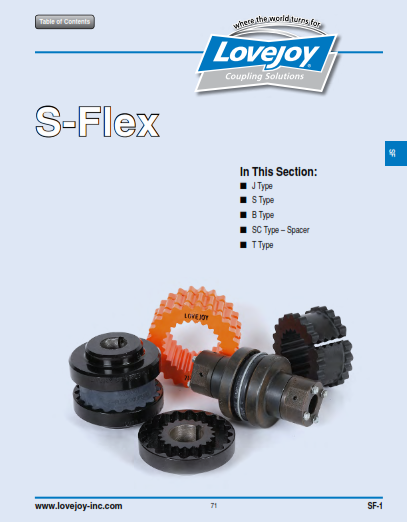 While the Lovejoy S-Flex PDF catalog provides the necessary information and data to properly size an S-Flex sleeve coupling, a few things to keep in mind that you will need to know are:
While the Lovejoy S-Flex PDF catalog provides the necessary information and data to properly size an S-Flex sleeve coupling, a few things to keep in mind that you will need to know are: - Horsepower (HP or KW) and speed (RPM) of the driver and/or torque
- Shaft and keyway sizes of driver and driven equipment
- Application description
- Environmental conditions (such as temperature, corrosive chemicals, space limitations) as well as misalignment expected
This calculated design torque must still be less than the published nominal torque rating. Service factors allow for adequate coupling life given that different types of equipment, even if the torque requirements are the same, will put different stresses and wear on a coupling.
Other critical characteristics to be sure to check before making a final coupling selection include:
- Maximum bore capacity of the flanges (as well as minimum bore in some cases)
- Maximum speed capability of the coupling size
- Resistance of the sleeve to the environmental conditions expected
- Size of the coupling (O.D. and OAL) fits into the "envelope" available
To keep learning about S-Flex couplings on this blog, go to:

No comments:
Post a Comment